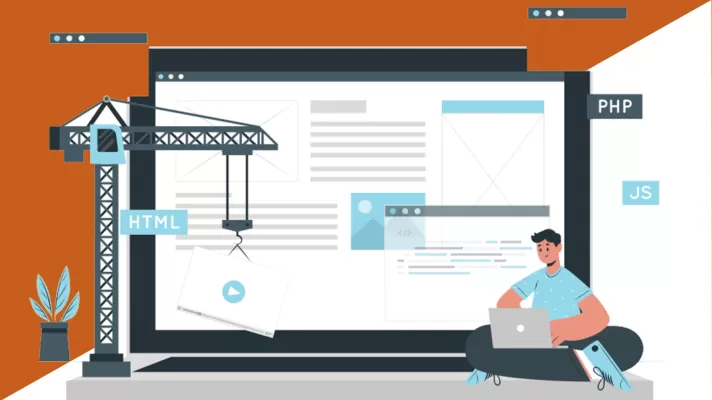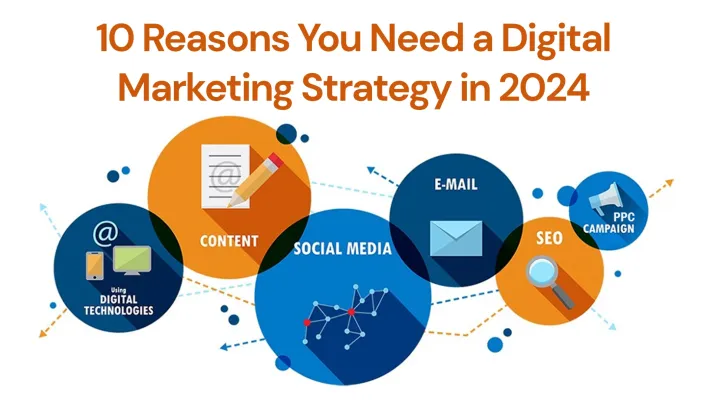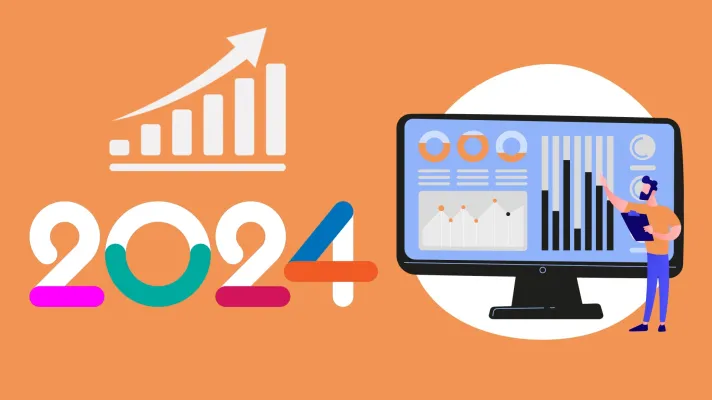
Our daily lives now greatly rely on web applications. They are used by numerous internet businesses, including as social networking sites and e-commerce websites.
1. Introduction
Are you considering developing a web application but are unsure of the procedure? Look nowhere else! In this extensive course, we will walk you through every stage of creating a web application.You may construct a successful online application using the knowledge and advice in this article, regardless of your degree of programming experience.Our daily lives now greatly rely on web applications. They are used by numerous internet businesses, including as social networking sites and e-commerce websites.Even though it could seem challenging, creating a web application can be lucrative and pleasant if you approach it with the right attitude and understanding.
2. Understanding the Web Application Development Process
A web application must go through various stages in order to be developed successfully. Let’s go into more depth about each level.
2.1 Defining the Project Scope
It is essential to establish the project scope before beginning the development process. This includes determining the application’s goal, target market, salient characteristics, and expected results.
A clear understanding of the project scope sets the foundation for the entire development process.
2.2 Gathering Requirements
The next phase is to gather requirements after the project scope has been specified. This entails conducting interviews, surveys, and research to determine the users’ individual needs. Understanding the requirements helps in designing an application that fulfills those needs effectively.
2.3 Designing the User Interface
A web application’s user interface (UI) is essential to its success. It controls user engagement with the programme and directly affects the user experience.
During the design phase, wireframes and mockups are created to visualize the application’s layout, navigation, and overall aesthetics.
2.4 Developing the Backend
The backend development involves building the server-side components of the web application.
This entails developing a solid architecture, establishing databases, managing data storage and retrieval, and putting business logic into place.
Python, Ruby, Java, and Node.js are some of the more well-known backend programming languages.
2.5 Implementing Frontend Functionality
Frontend development is concentrated on the web application’s client-side components. The user interface must be built using JavaScript, HTML, and CSS, and users must be able to communicate with the backend.
Frameworks like React, Angular, and Vue.js facilitate development since they provide reusable components and rapid data processing.
2.6 Testing and Quality Assurance
To make sure the online application works as planned and offers a seamless user experience, thorough testing is crucial.
To find and correct any problems or faults, many testing approaches are used, including unit testing, integration testing, and user acceptance testing.
Processes for ensuring quality contribute to the application’s overall stability and dependability.
2.7 Deployment and Launch
The web application is prepared for deployment after the development and testing processes have been finished.
This includes setting up hosting services, configuring servers, and making sure the necessary security precautions are in place. The programme is then opened, allowing users to use it.
3. Choosing the Right Technology Stack
Your web application’s success depends on choosing the right technological stack. It comprises choosing the proper programming languages, frameworks, libraries, and databases based on the requirements of your project.One should consider factors like performance, scalability, and community support when making these decisions.
4. Setting Up the Development Environment
Before you start coding, it is essential to set up a development environment. This includes installing the necessary tools and software required for web application development.A code editor, version control system, and development server are some of the essential components of a development environment.
5. Defining the Project Scope
Define the project scope precisely to maintain clarity and concentration throughout the development process.Determine your web application’s goals, objectives, and target audience. This will help you make judgements and stay on track during development.
6. Gathering Requirements
Understanding your users’ requirements is critical for developing a web application that fits their demands.To collect important insights, conduct user interviews, surveys, and market research.These requirements should be documented and used as a reference throughout the development process.
7. Designing the User Interface
To provide a user experience that is both intuitive and engaging, a well-designed user interface is necessary.To preview how your online application’s layout, navigation, and overall appearance will look, create wireframes and mockups.Concentrate on building a clean, visually appealing interface that is consistent with your business identity.
8. Developing the Backend
Backend development involves building the server-side components of your web application.Choose a programming language and framework that best suits your project requirements.Architect a robust backend infrastructure, set up databases, and implement secure APIs for data communication.
9. Implementing Frontend Functionality
Frontend development brings life to your web application’s user interface. Write clean and modular HTML, CSS, and JavaScript code to create interactive and responsive web pages.Leverage frontend frameworks and libraries to speed up development and enhance user experience.
10. Testing and Quality Assurance
Test your web application thoroughly at each level of development to detect and resolve any faults or difficulties.Unit tests, integration tests, and user acceptance tests should all be performed to guarantee that your application functions properly across several devices and browsers.Prioritize quality assurance in order to provide a dependable and error-free online application.
11. Deployment and Launch
Configure servers, set up hosting services, and optimise performance before deploying your web application.Put in place security procedures to safeguard user data and prevent potential vulnerabilities.Launch your web application and make it available to your target audience once everything is in place.
12. Conclusion
A web application is created through a methodical and well-defined development process. You can effectively walk through each stage and construct a high-quality web application by following the methods provided in this book.Don’t forget to review the project scope, gather requirements, create a user-friendly interface, develop the backend and frontend, thoroughly test your application, and deploy it correctly.
FAQs (Frequently Asked Questions)
Q1 How long does it take to create a web application?
The complexity, scope, and size of the team all affect how long it takes to construct a web application. A normal web application development job, however, may take a few weeks to several months.
Q2 Does knowing how to code make it necessary for me to build a web application?
Even though programming knowledge is required, there are a variety of tools and frameworks that can help with web app creation. You need to comprehend HTML, CSS, and JavaScript on a basic level in order to modify and improve your online application.
Q3 What is the price of creating a web application?
The price of creating a web application might vary depending on the requirements, complexity, and hourly rates of the development team. You should collaborate with a development company or a freelancer to obtain a more precise pricing estimate for your specific project.
Q4 Can I update my web application after it is deployed?
Yes, web applications can still be upgraded and enhanced after being launched. To keep your programme secure, add new features, and improve its performance based on user feedback, regular updates and maintenance are crucial.
Q5 Is it necessary to optimize my web application for search engines?
Optimizing your web application for search engines can improve its visibility and attract organic traffic. Consider implementing SEO best practices, such as using relevant keywords, creating unique and valuable content, and optimizing meta tags, to enhance your web application’s search engine rankings.






